If you’ve never been whitewater rafting, then you really should put it on your bucket list. It’s an amazing way to see a river, experience the power of whitewater and have a great day with friends old and new.
If you have an adventurous spirit, you might not be too concerned about what’s involved in a rafting trip. Paddling hard, working as a team and getting absolutely soaked? Sign me up. However, if seeing pictures of rafts launching off waves makes you a little nervous, this guide will help put you at ease by going over everything you should expect from a trip. Including letting you know that you don’t have to go on a wild ride your first time out.
What is whitewater rafting?
Whitewater rafting is a recreational activity where a group of people paddle down a river in an inflatable raft. It’s a popular thing to do on rivers that are appropriate for it, so wherever such a river exists there will be outfitters. These outfitters provide all the expertise, gear and information on how to paddle the river safely. It’s a really fun experience that just about anyone can do. While you can buy your own raft and get into the sport on your own terms and time, the majority of people choose to go the outfitted route.
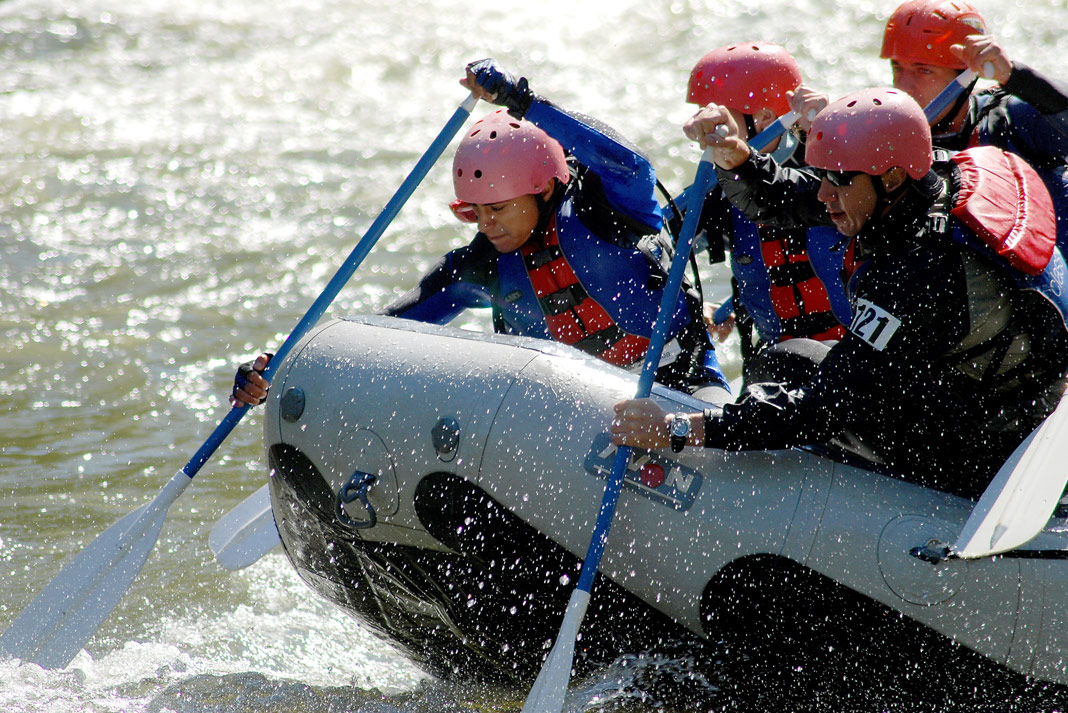
What is the difference between whitewater rafting and black water rafting?
Whitewater and black water rafting are seriously different things—black water rafting involves taking a raft down rivers that are in caves. It’s a pretty niche sport and isn’t something you find at your regular tourist destination.
Whitewater rafting, on the other hand, can be found all over the place. Any place that has jungle treks (think Costa Rica) probably has whitewater rafting options. The same goes for big rivers, like the Ottawa in Canada or Colorado in the United States. Whitewater rafting involves paddling down whitewater (the rushing, splashing waves look white and are therefore called whitewater) rivers.
What are the levels of whitewater rafting?
Each river presents different obstacles and conditions (and these obstacles and conditions can vary depending on the time of year). The size of the waves and the presence of waterfalls and whirlpools make some rivers harder to paddle than others. As such, river guides had to come up with a system to grade these features.
River ratings go from class I to VI. Class I rapids are found in moving water that gently pushes a boat and make for an easy, relaxing paddle. Class VI are the rivers you see in Red Bull kayaking videos with massive waterfalls, narrow canyons and huge waves.
Generally, whitewater rafting trips stay in the class II to IV category.
What size rafts are there?
There are a couple different raft sizes and how many people are in the raft will depend on the time of year and how busy the rafting company is. That said, the usual numbers are about six to eight people per raft. Some outfitters will also have larger rafts that can accommodate up to 12 people.
Why go whitewater rafting?
Imagine rolling over a wave, darting between some rocks and then smashing through the next six-foot wave of warm water on a hot summer day. Imagine doing that with your best friends, laughing and screaming at the thrill of it all. Whitewater rafting is like spending the day at a water park made by mother nature. And, of course, you’ll also get to see some amazing scenery in a place not too many people are privy to. It’s a super fun way to while away a day with friends or family.
How do you prepare for whitewater rafting?
If you’re going with an outfitter, there isn’t much you need to do to prepare. The outfitter will provide all the gear and pre-instruction, and your on-board guide will supply you with direction on the river. You’ll just need to listen, paddle hard, and be ready to get wet and have a good time.
If you’re scared of rushing water, then you’ll need to mentally prepare for that. The guides will take good care of you though, and you can be sure their number one concern (after your safety) is that you are comfortable with what’s going on.
What should I bring for rafting?
Your outfitter of choice will have an FAQ page on their website telling you what to bring. Check with them the day before you go and pack whatever it is they suggest. You’ll generally want an extra pair of clothes and towel for after the paddle, and maybe some food and drink for afterward as well. You can leave these items in your vehicle, or send them in the shuttle vehicle to the pick-up location.
If you wear glasses, bring a strap to attach your glasses to you. And don’t forget to apply waterproof sunscreen before heading out!
What to wear whitewater rafting
One of the most frequently asked questions is, “What should I wear while whitewater rafting?” And it’s a great question. You’re definitely going to get wet. Owl Rafting, a company that sends thousands of people down the Ottawa River every year, gives this advice: Wear sneakers, sandals with a heel strap or water shoes—they don’t allow flip flops or Crocs.
In terms of clothing, going for athletic pants and shirts (read: quick-dry, non-cotton material) is your best bet. Wearing a bathing suit underneath these items is also a good idea as it will allow you to dry out faster once you’re done. On cold days, wool socks and wool or fleece sweaters with a windbreaker are recommended. On top of this, nearly everywhere that has cold water temperatures will rent wetsuits.
How do you stay warm when rafting?
If you’re really concerned about staying warm while rafting, the best thing you can wear is a wetsuit. Most outfitters will rent wetsuits for an extra fee and the extra comfort they provide is well worth the money. Simply put, if you get cold easily, rent a wetsuit.
What do you wear under a whitewater rafting wetsuit?
If you’re going on an outfitted tour and you’re using a rental wetsuit, the ideal clothing underneath is a rashguard. This is basically a form-fitting shirt made of swimsuit-like material. If you don’t have a rashguard, just wear a bathing suit or boardshorts underneath. You want the neoprene of your wetsuit as close to your body as possible to stay warm.
Can you wear Crocs whitewater rafting?
Most outfitters will say heck no to Crocs. The problem is you’ll lose them. Same goes for flip flops. If you do wear sandals, they need to be an active style of sandal with a heel strap.
What are the best shoes for whitewater rafting?
The best shoes for whitewater rafting are the same shoes that are the best for whitewater canoeing and kayaking—sport specific shoes that drain well and can handle being soaking wet are best. That said, designated paddling water shoes are pricey. Your next best option is an old pair of sneakers that won’t get really heavy if they’re wet. You’ll be walking over rocks, roots and rough ground, so having more support than dollar store water shoes is preferable.
What to expect on a whitewater rafting trip
Most whitewater rafting days involve some sort of orientation/safety meeting. You’ll watch a video and/or listen to instruction, get geared up and then get in the boat (though sometimes you will need to be shuttled to the put-in first). Depending on how long your tour is, you’ll head downstream for anywhere from one to six hours.
How to whitewater raft
Outfitters will provide instruction before you get in the boat, and once you’re in it too. Sometimes you’ll have a canoe-style paddle, other times you’ll be told to just hang on! Rest assured, river guides do this every day, all summer long, and they know how to keep you happy and safe.
How to steer a whitewater raft
Rafting guides do most of the steering during a whitewater trip. They’ll be using two oars, set up like a row-boat (only facing forward) and will do the majority of the heavy steering. Sometimes, you’ll be given a canoe-style paddle to help out, but it depends on the river, the group and the outfitter.
Is whitewater rafting dangerous?
Of course anything like whitewater rafting involves an element of risk, but outfitters spare no effort to keep their clients safe. Bumps and bruises happen, but serious injuries are few and far between.
How many people die from whitewater rafting?
While there are deaths from whitewater rafting, the numbers are negligible. The statistics are about six deaths per 2.5 million rafters.
What happens if you fall out while water rafting?
Do you fall out whitewater rafting?
Your guides will generally avoid having you fall out of the raft. That said, the safety meeting at the beginning of the trip will prepare you with how to handle such an accident.
What happens if you fall out?
During the safety meeting you will be told what to do if you fall out of the raft. They’ll tell you how to swim in rapids and where to exit the river or flow of water. Your guide will also yell instructions to you on what to do. If you do fall out of the raft, make sure you know what’s downstream, take actions to avoid anything dangerous, and then look to your guide for instructions. They’ll either come get you and pull you into the boat while still on the water, or in rare circumstances they’ll ask you to swim to shore and then they’ll come get you.
How do you stay in the raft when whitewater rafting?
Your guides will tell you the best way to stay in the boat while whitewater rafting, but the best advice is to brace your legs as well as possible and hold on. If you’re not using a paddle, you can simply hold onto the boat as tight as possible. Anticipating what the boat will do when hitting rocks or waves and counteracting the movements will also help.
Who can go whitewater rafting?
Whitewater rafting is fun for the whole family. Outfitters often take kids as young as 5 and the maximum age will depend on any preexisting health conditions. It’s best to ask this question of your outfitter right off the bat.
Is there a weight limit for rafting?
The easy answer is no. Most outfitters claim there is no weight limit for paddlers.
How old do you need to be to whitewater raft?
Many outfitters will take kids as young as 5 years old, but more difficult trips may have higher age limits or a minimum weight limit.
Should I go whitewater rafting if I can’t swim?
Outfitters are prepared for non-swimmers and have had non-swimmers in the past. Just let the company know and you’ll be fine.
Whitewater rafting when pregnant
This is one of the few restrictions when it comes to whitewater rafting. Nearly everyone can go rafting, except pregnant women.
How much is whitewater rafting?
Half-day whitewater trips range from outfitter to outfitter. That range goes from about $80 to $120 per half day.
How much to tip a whitewater rafting guide
As fun as river guiding may seem, the good guides work their butts off to keep their clients happy and get paid very little. These guys and gals rely on tips to fund their off-season adventures. A tip of $5 per person in your party will go a long way for these river heroes.
Where to go whitewater rafting
There are endless options for places to go whitewater rafting. Choosing where to go depends on a bunch of things. If you’re looking to do nothing but raft for three weeks, then maybe the Grand Canyon is the best bet. If you’re looking for an afternoon of fun this summer, then look to outfitters close to where you live. There are outfitters throughout North America, so there’s probably somewhere within a couple hours of where you live. If you are looking to go on vacation to a place that also has whitewater rafting, places like Costa Rica are a great option.
Where is the best whitewater rafting?
This is obviously a tough question to answer and no list is final. But some of the world’s most popular places include the Salmon River in Idaho, the Alsek River in Canada, the North Johnstone River in Australia and the Rio Upano in Ecuador.
Where is the best whitewater rafting in the US?
Some of the best places to whitewater raft in the U.S. are the Colorado River (the Grand Canyon!), the Gauley River in West Virginia, the Salmon River in Idaho and the Rogue River in Oregon.
When to go whitewater rafting
When is whitewater rafting season?
Most outfitters run their season from mid-spring until late-summer. This is when the rivers are at their highest and warmest. This obviously depends on what part of the world you’re in, though!
When is the best time of year to go whitewater rafting?
Water levels dictate seasons for whitewater rafting, so most outfitters run between mid-spring to late-summer. The water will be the highest and most exciting in the early spring, but also the coldest. There also won’t be many people doing it that time of year. As the summer progresses, the water will get warmer and the crowds are likely to get bigger.



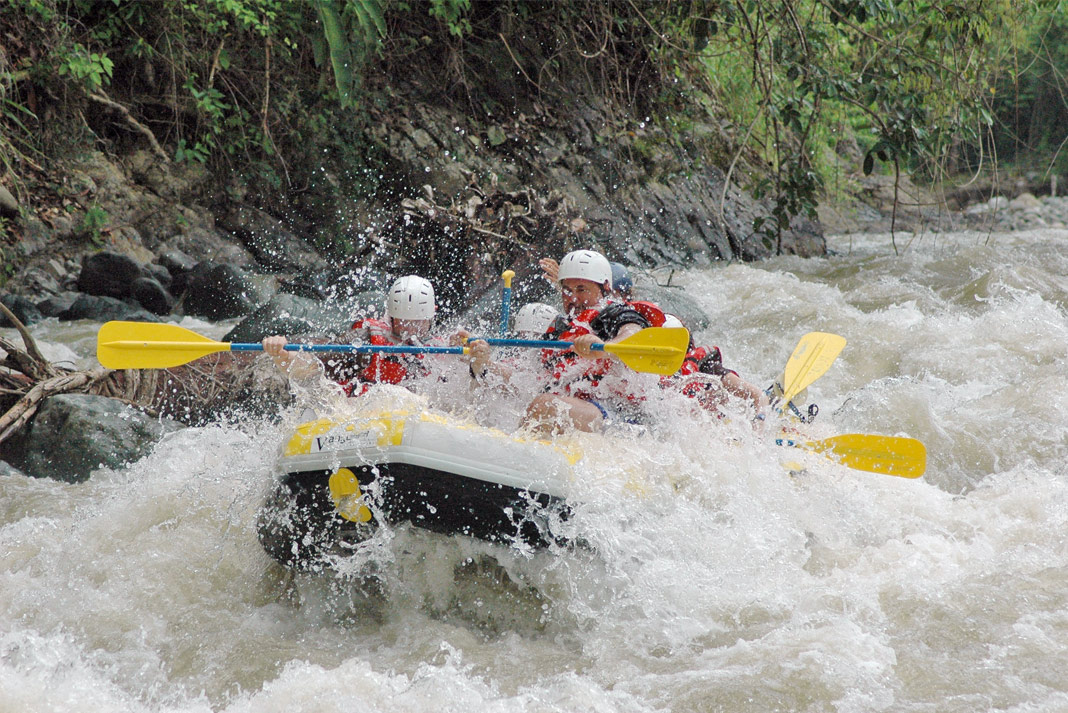
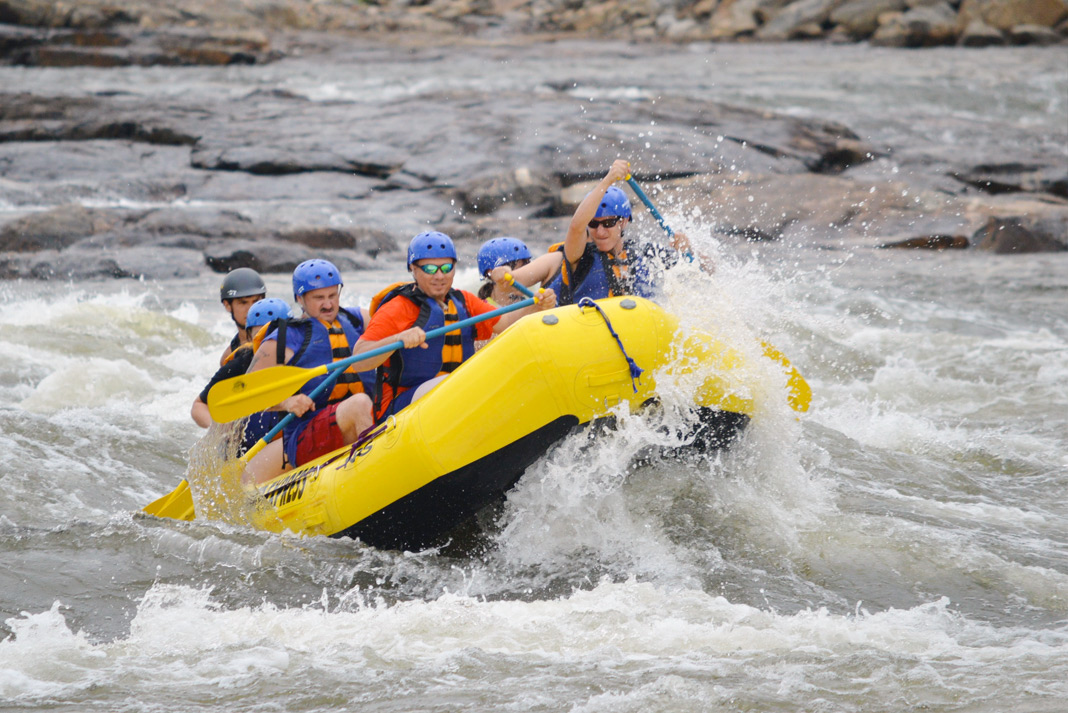
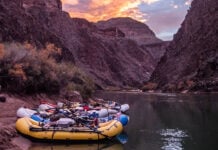
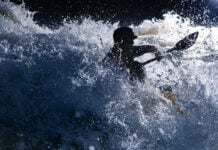

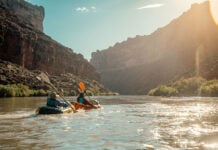
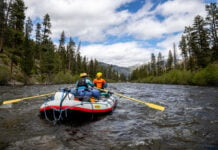

Thanks for your tips on what clothes I need to bring when going rafting. I’ll be sure to take a rashguard with me to make sure that I stay feeling warm and while rafting and maybe even rent a wetsuit if I can. My friends and I are planning on going rafting soon and since I’ve never done that sort of thing, I don’t know what to expect. Your article was really helpful, it really helped me prepare for the occasion.